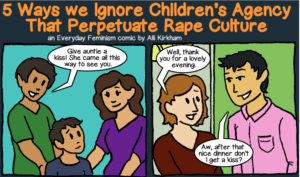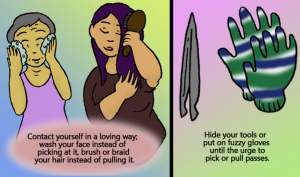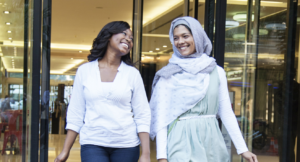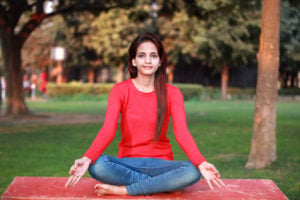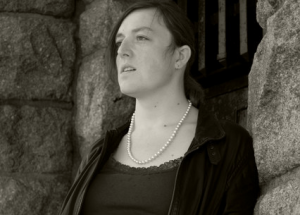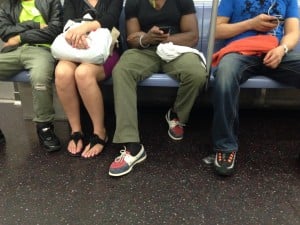
People at work sitting in a circle
Alright y’all, lemme cut straight to the point.
If your feminist—or really any justice-oriented—space is predominantly white and cisgender (cis), chances are that it’s got a lot of messy unchecked dynamics at play.
I’ll tell you my story of how I came to realize this seemingly obvious truth and what I’ve learned from it.
My freshman year of college, I founded a feminist organization with two cis women. One of these women was white and American and other who was Brown and Indian. I’m South Asian and trans, but at the time I hung out with mostly white people and identified as cis—or, at least, not trans.
So, needless to say, I was messy myself.
The feminist organization turned into a space where we, the three leaders, would host discussions to delve into what we decided were compelling feminist topics. With all of us having the same majority white and cis friends, our attendance reflected that demographic—and so did the people who applied to be on the club’s board.
I’m a senior now and after having done a lot of self-growth, I’ve understood what troubled me so much about the club as the years went on. Obviously, one reason was that it was majority white and cis and it wasn’t what I needed to come into my own identity.
But another was that I was really confused about why other people of color (POC) and trans people weren’t showing up like I was.
There were several reasons, but another major one was that the club’s demographics revealed themselves in the way we held space. We were ignorant about anti-Black racism and trans-antagonism and ended up doing a lot to make the space sort of silently exclusionary and oppressive.
So let me tell you more of what I learned:
1. No feminist space that is predominantly white and cis is “safe” or “open to everyone.”
I start with this one because it’s actually a really common sentiment held in all types of “white progressive” spaces that there is such thing as a safe or universally accessible space.
Often, the leaders of these spaces (who are generally “white progressives” with a—usually non-Black—person of color here and there) will try to be the most progressive they can be in order to welcome people who don’t share their identities.
The sentiment might come from a place of good intentions, but the mission actually ends up being to make a space where, white and cis people, for example, end up having cultural and social power in that they’re in the majority.
Whether they intend for this or not, and even if there are a few people who don’t share those identities in attendance, a prevailing norm of unquestioned ignorance and specific approaches to politics (like respectability) remains.
This can mean that marginalized people in those spaces can often feel silenced, small, and microaggressed.
One result of this dynamic then is that the space ends up claiming accessibility, but with propout properly factoring mental health accessibility into the equation.
This is especially relevant in the case that this space exists in a majority white and cis setting, like a predominantly white college or university (commonly referred to as a PWI).
2. Feminist spaces that have majority white and cis leadership need to be reflective about how they’re distributing their power and resources.
It’s vital that organizations led by white and cis people redistribute their power and resources.
Now, this isn’t to say that other identities aren’t important, but these two (race and gender) are ones that I choose to focus on in this article because they’re pretty significant to shaping cultural dominance and exclusion in feminist spaces.
And, they’re important to my personal story.
That’s why it’s so important that, when white and cis people have power positions in feminist and justice-oriented organizations, they work to address the cultural hegemony that they can easily produce.
This can sometimes fly under the radar when it’s mistaken for problem-free progressivity (because “we’re doing the work!”).
And as I stated in the earlier point, this is even more salient in a majority white and cis context like a PWI. In these types of settings, marginalized students tend to get a lot less of what I call ‘cultural space.’ So that’s all the more reason that platforms who have a good deal of influence over culture need to redistribute that power and break down the cultural dominance that tends to emerge.
3. If a feminist space intends to hold a conversation about marginalized (emotional, cultural, identity-related) experiences, the person who shares that experience should lead the discussion.
A big mistake that my feminist club made was hosting discussions on topics that either speculated on other people’s experiences (when there was nobody who shared those experiences in the room) or that engaged with them in a way that made some marginalized people feel really uncomfortable.
Such as, for example, having a white cis male professor come in to speak about the differences in cultural attitudes toward Caitlyn Jenner’s gender transition and Rachel Dolezal’s “racial transition.”
Our leadership at the time was comprised of about seven white cis women and two non-Black POC. None of us had a sufficient grasp on anti-Black racism or trans-antagonism, and so we didn’t see how minimizing and inappropriate that meeting was.
And if we had to have the leadership that we did, meaning that other people of color and trans people opted out of leadership positions, then what we should have done is turned our focus inward to ourselves and our majority white, cis membership.
Instead, we chose to continue hosting discussions like these with academic ‘experts,’ because we didn’t acknowledge the importance of challenging the violences of whiteness and cisness that we were enacting in those very instances.
4. It’s not smart for the mission of a predominantly white and cisgender feminist space to be devoted to shifting culture unless that culture shift is directly invested in critiquing white supremacy and cis-privilege.
From my experience and my own complicity in perpetuating oppression, I’ve learned how important it is for a predominantly white and cisgender feminist group to do serious self-reflection rather than speculating or theorizing with “good intentions.”
It makes a whole lot of sense. When we have privilege or ignorance, we should focus on challenging that in ourselves instead of feeling entitled to publicly explore our ignorances.
5. People like me can do a lot of harm in majority white spaces.
At the time of starting this club, I was relatively well-informed about the statistics of racial injustice in this country, but I understood very little about how oppressive dynamics operated interpersonally.
POC learn white supremacy, and some of us internalize it more than others.
But particularly Asians, many of whom are taught that we’re better than other people of color, can tend to assimilate and affirm white supremacy. This means that we don’t stand with and for other people of color in opposition to white supremacy.
And sometimes, based on our conditioning, we’re just really eager to invalidate other people of color’s experiences with oppression. And when we do that, white people often use us as token minorities who legitimize their violence!
That’s to say that there are usually a few of us POC in majority white spaces who actively sustain the white supremacy that exists in them.
We as—especially non-Black—POC need to be a lot more reflective about our comfort with white people and how, in majority white spaces, our ignorance often goes unchecked too.
[do_widget id=’text-101′]
Ayesha Sharma is a non-binary South Asian scholar and artist continually negotiating a relationship with themselves and their communities through practices of decolonization. They are most interested in literal and symbolic reclamation as an art practice and investing themselves in community care. Ayesha has written for the Urban Democracy Lab and is published in ANTYAJAA: Indian Journal of Women and Social Change.
Search our 3000+ articles!
Read our articles about:
Our online racial justice training
Used by hundreds of universities, non-profits, and businesses.
Click to learn more






